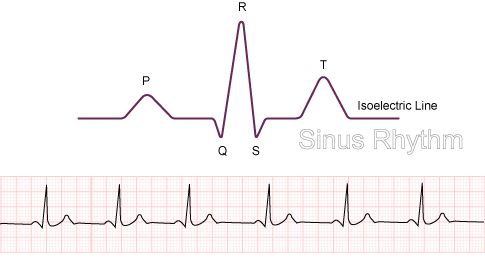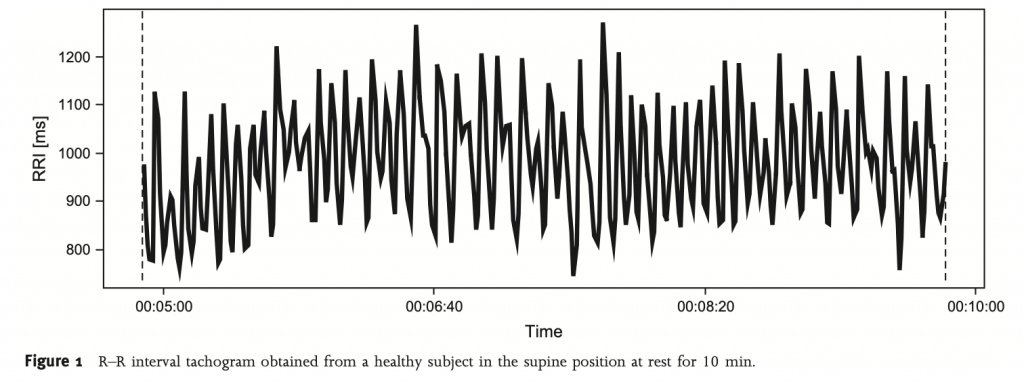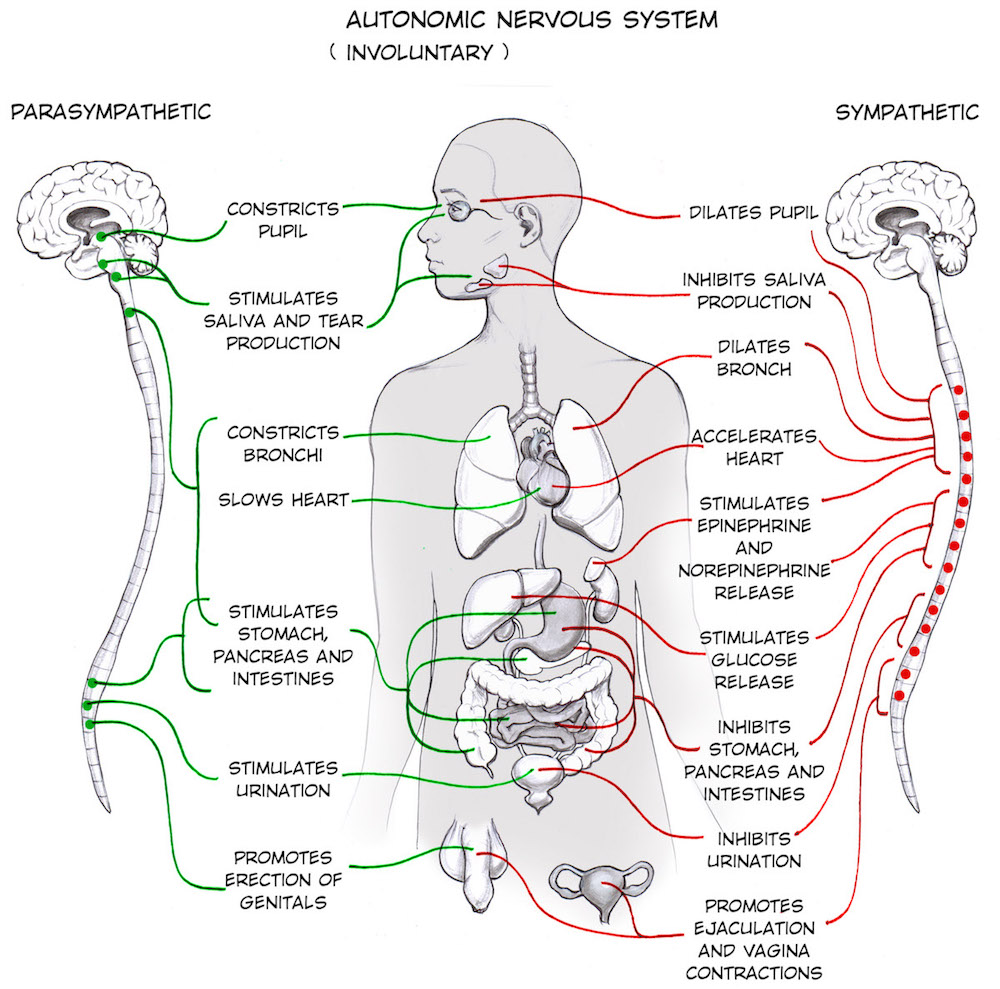In my previous blog The best recovery strategy I discussed various recovery strategies. The conclusion was that the best recovery tool is sleep. Recently heart rate variability (HRV) is a hot topic again as a monitoring tool of your recovery. I say again, because the concept of heart rate variability is not new.
What is heart rate variability?
Most of us know we can measure our heart rate per minute. We have wearables that tell us what our heart beat per minute is, our we can find our pulse and monitor it for 10 seconds and multiply the amount of beats per 6 etc. The interval between each heart rate varies. This is our HRV.

source
Let me explain further. If we make an electrocardiogram (ECG), we see the PQRST line (figure1). Here is where the doctor can see abnormalities.
HRV can be measured by various measurements. The R-R interval, which we will use here because it is used in most wearables.
R-R interval
The R-R interval measures the interval between the R peaks, that we have with the ecg (figure 2). Variations in RR intervals yield measures of HRV [1].

Derived from [2] Kingsley and Figueroa
Our heart rate increases as we experience physical strain and decreases when we relax, though the time between each heart beat can vary. This is our HRV. In large population studies, greater HRV is consistently associated with better health [1].
The autonomic nervous system is responsible for changes in the HRV. The autonomic nervous system, regulated everything that we are unaware.
sympathetic and parasympathetic nervous system
The autonomic nervous system can be divided in two systems. The sympathetic and the parasympathetic nervous system. In figure 3 we can see the different functions of the systems. The sympathetic is also referred to as our fight or flight system. All functions are activated to quickly respond do action or danger. Whereas the parasympathetic (rest and digest) slows us down and let us recover. It is believed that the HRV respons more quickly to parasympathetic impulses. Therefore it might tell us something about how well we recovered.
HRV and recovery
So know that we know a little bit about HRV, does it tell us something about how well we recovered? The answer is maybe. It seems that HRV is used in a lot of studies as a tool for outcome measures. In pathologies they have non to limited prognostic value [1]. In sports it is suggested that HRV in rest can tell us something about our recovery status. Is this true?
A study done in 2003 by Aubert et. al. [3] suggests that HRV could detect overtraining in an early stage. This due the fact that overtraining causes variations of the autonomic nervous system. Although a systematic review by Bellenger et. al. [4] found several studies that confirm the correlation between overtraining and HRV in endurance training. They also found correlations between an increased post exercise HRV and adaptations (positive). This make the interpretations difficult without other variables.
Strength training and HRV
Several studies [2,5] investigated the role of HRV and recovery after strength training. Both hypertrophy training and maximal strength training were investigated. Both showed a reduction of HRV after strength training. However, the HRV returned to baseline after 10 minutes for the maximal strength training and 30 minutes for the hypertrophy training.
After 24 hours there were no difference seen compared to baseline. However the maximal voluntary contraction (MVC) only return to normal after 24 hours. This suggests that HRV is not a valid measurement after strength training.
Conclusion
Although there might be some value in monitoring your HRV when becoming overtrained. There is a lack in evidence to support the role of HRV and recovery after a hard workout. Also a topic that is not discussed in this blog is stress. Psychological stress has influence on our Resting HRV. Stress of course is important in terms of load management, since our load capacity diminishes when stressed. In a broader scheme, changes in HRV might give you a hint if it is wise to push hard in your workout today or to take it easy. However it is too early to make any hard conclusions for different HRV measurements. Like often, further research is needed.
References
- Joyce D. AND Barret M. State of the science: heart rate variability in health and disease. BMJ supp. palia. care 2018;0;1-3
- Kingsley JD. AND Figueroa A. Acute and training effects of resistance exercise on heart rate variability. Clin Physiol Funct Imaging 2016 May;36(3):179-87.
- Aubert AE, Spes B AND Beckers F Heart Rate Variability in Athletes. Sports Med. October 2003, 33 (12):889-919.
- Bellenger CR, Fuller JT, Thomson RL, Davidson K, Robertson EY AND Buckley JD. Monitoring Athletic Training Status Through Autonomic Heart Rate Regulation: A Systematic Review and Meta-Analysis. Sports Med. 2016 oct;46(10):1461-86
- Thamm A, Freitag N, Figueirdo P, Doma K, Rottensteiner C, Bloch W AND Schumann M. Can Heart Rate Variability Determine Recovery Following Distinct Strength Loadings? A Randomized Cross-Over Trial. Int J Environ Res Pub Health. 2019 nov 7; 16(22)




